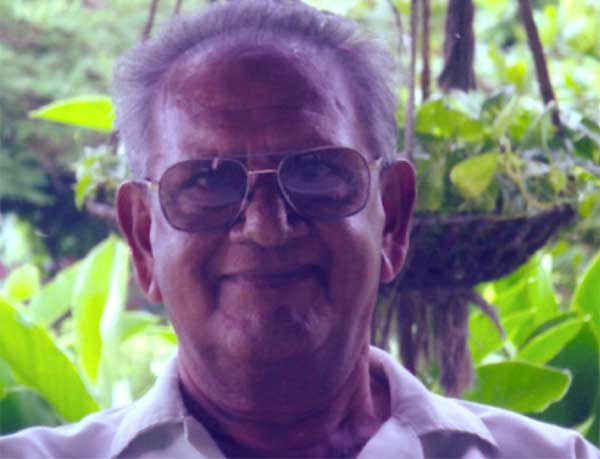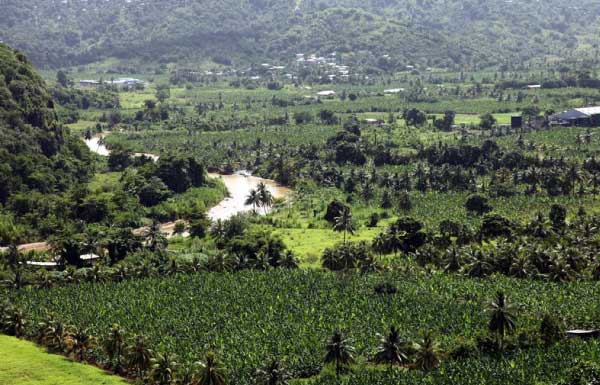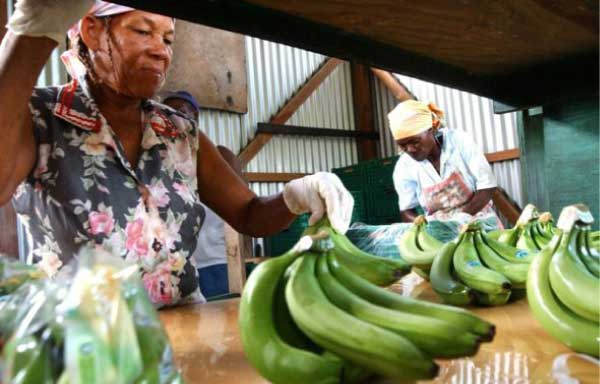
FOLLOWING publication of my Article ‘Agriculture Glory Days’ in the VOICE (weekends 13th and 20th June,2015), I am expanding on the discussion of agricultural activities of the past and the lessons learnt which could be beneficial for the ‘Way Forward’ to achieve productive and sustainable land use to contribute to re-establishing “Agricultural Glory”.
The period under consideration takes us back to the sugar industry. It is general knowledge that this industry was the dominant source of export income for hundreds of years until the mid-60’s when the sugar estates of Dennery, Cul de Sac and Roseau converted to banana production. Income from the sugar industry was obtained largely through export of crude sugar to the UK.
Each of these three estates had a factory where sugar cane juice was processed into crude sugar. The whole process from field cultivation to factory production of crude sugar required the utilization of various mechanical and industrial equipment. The industrial operations ranged from the extraction of sugar cane juice and its conversion to syrup, crude sugar, molasses. White rum was also a by- product. Arising from these activities, the factory on each of these estates was a centre for utilizing and developing mechanical, chemical and technical skills. These skills ranged from pan boilers (crystallizing the sugar from the boiled juice), chemists, mechanics, plumbers, machinists, welders etc. The pan boilers were highly specialized and came in mostly from British Guiana (Guyana).
Some St. Lucians became highly skilled in areas which made them a useful national resource well after the sugar industry ended. Abel Ghirawoo covered the activities of the sugar estates in some more detail and identified some of the more prominent persons of skill in his autobiography “Run, It is Going to Rain”, recommended reading for all persons interested in St. Lucia’s agricultural history. The persons referred to in that book include; Cox Levexier, Chief Factory Mechanic and very knowledgeable in both mechanical and manufacturing operations; Fitz Francis, trained lathe-man who became famous in fabricating engine parts. Subsequently, he went for training in the UK to return to St. Lucia and started his own engineering workshop from which a mechanical engineering legacy has continued through his sons;Augustin Matthews, top class welder who repaired the hull of a damaged Geest ship at the Castries wharf to the accepted standard of the UK shipyard.
Other than sugar cane production on Dennery, Cul de Sac and Roseau estates there were other large estates such as Marquis, Fond, Choc, Troumassee, etc which varied in size from several hundred to over 3000 acres. Largely through these and many comparatively smaller estates , St. Lucia initially had a diversified agricultural production base in that many estates cultivated large acreages of tree crops such as coffee , cocoa and coconuts. Some estates such as Marquis, Troumasse, Ferrands and Cap also had livestock.

Reference was made in the earlier article ‘Agriculture Glory Days’ to crop distribution and trials with new clones of cocoa and varieties of coconuts, citrus, pineapples, bananas and Irish potatoes on various estates beginning with the tenure of Swithin Schouten followed by Charles Cadet as Chief Agricultural Officer. The estates provided the lands and had the machinery and labour supply for the land works and planting. The Department of Agriculture looked after the propagation, coordination and distribution of planting materials. The cocoa clones were propagated in great quantities at the special environmental (sunlight and humidity) control facilities which had been constructed at the Union Plant Propagation Centre. Much of the existing improved cocoa clones, particularly in the Soufriere area came about through this relationship between the Department of Agriculture and estates. Regrettably in many areas, cocoa was uprooted to be replaced with bananas in pursuance of the more assured short term income from the latter.
Many of the estates had extensive acreages under coconuts and operated copra kilns. They were the major suppliers of copra, initially for export but later for local manufacture of coconut oil and soap. Coconut meal was a by-product used in pig production. This allowed for an integrated agricultural system. In this regard the role played by Joseph Quentin Charles(JQ) as a local pioneer manufacturer of agro Industrial products should be remembered . The crop husbandry needs of coconut production have generally been neglected and most plants are now very old. Any interest in resuscitation of local coconut oil manufacture would need to address the deficient state of coconut husbandry and the need for widespread replanting with improved disease resistant cultivars.
Land Reform had for some years been seen as necessary as most of the flat and potentially productive valley lands were under the control of the large estates which generally did not cultivate them to full production potential. Further, much of the peripheral estate lands were not cultivated at all. This situation led to increasing social and moral sentiments in favour of land reform. A Land ReformCommission was established by Government in 1980 with Dr. George Beckford UWI, Mona, as chairman: Dr. Nicholas Liverpool , UWI , Cave Hill and Mr. Calixte George as members. Recommendations were outlined in their report but some large agricultural estates had already began partitioning their lands as they appeared to welcome the opportunity to liquidate some or most of their substantial land assets particularly as there was increasing demand for land for banana farming.

Dennery Farm Co.
Government’s purchase of the large Dennery estate and its conversion to Dennery Farm Co. with subsequent plans to subdivide lands for farming, residential and recreational development represented an early action in the Land Use rationalization process for large estates.
St. Lucia Model Farms:
Concern about proper conduct of the Land Reform process led to agreement between Geest Industries Estates Ltd and government to develop suitable models for partitioning the Geest estates. Much of Cul de Sac estate was partitioned into 20 to 40 acre farms with owners such as Dwarkasingh ,Laurie, Laville, Mrs Rock and Abel Ghirawoo. The Vanard portion of Roseau estate was also partitioned off into sizeable acreage farms and sold to Walters and Chris Cox. Most of the productive flat lands of Roseau estate were designated to be partitioned into smaller, five acre holdings, held by a development company registered as St. Lucia Model Farms (SLMF). The company was jointly owned by Government of St. Lucia (operating through NDC), Geest Industries Estates and the Commonwealth Development Corporation( CDC). Long term Loans were supplied by CDC and Geest Industries and a short term loan was obtained from the St.Lucia Co-operative Bank. The European Development Fund (EDF) also became involved and offered grant funds to develop the hillside lands as a diversification sub-project. One thousand six hundred acres of estate lands were designated to be developed into five acre holdings on the flat and 10 acres on the hillsides.
The operations began in earnest in 1982 under General Manager, Mr. Edward Kent who in earlier years was General Manager at Dennery Estates. Mr.LeonardLeonce was engaged initially to provide an agriculture engineering input, as the project was seen to require a high degree of farm infrastructure development encompassing farm access roads, sub soiling, plowing, land grading, drainage, bed formation etc, all of which required utilizing heavy machinery. These works were followed by substantial replanting carried out by company staff before tenant farmers were brought into the project.
Selection of tenant farmer ( small holder) candidates was carried out through interview by a committee consisting of Board representatives, management and an officer from the Ministry of Agriculture. In keeping with shareholders’ wish consequent to difficulty in attracting suitable persons from outside the area, selected candidates originated mainly from the ranks of the workers and squatters on the estate lands. A few persons from outside of the Roseau community with entrepreneurial traits in agriculture were also included in the selected list.
Persons selected were brought into the project about eight weeks before bananas on their designated five acre plot was ready for harvest. At this point the new tenant farmer took over responsibility for crop husbandry and harvesting of his fruit which was then collected by the company and marketed through the SLBGA. Effectively the tenant farmer was not called upon to make any financial investment as the programme was conceived as a Lease arrangement. The farm tenant only needed to provide eight weeks of labour on his holding before he commenced harvesting and accrue income after deduction by the company of basic rent and administrative overheads.

The outcome of the project is summarized below:
• In 1987, five years after implementation, an internal CDC assessment report noted that the project was very successful in improving the productivity of the lands of the former Roseau estate and statistics revealed that the project was attaining average banana yields of 15 tons per acre.
• The top performing farmers were attaining yields of over 20 tons per acre which equated to that obtained in Central America. The average yield of the project was higher than that of most corresponding acreage anywhere else in the Windward Islands and it was well publicized at that time that SLMF banana production was higher than that of the entire island of Grenada. The relatively high yields of good quality fruit were a result of the initial Agricultural engineering works in all the elements of preparation for planting outlined earlier and the adoption by SLMF of the banana cultivation and field sanitation practices recommended by Winban R&Dincluding field pack harvesting . When the tenant farmers were brought in, their holdings were already well cultivated for high productivity and it depended only on their initiative and diligence to maintain or improve on productivity as chemical inputs and technology guidance were also made available to them.
• Tenant farmers’ performance was variable. Some, particularly those selected on the basis of entrepreneurial traits produced yields of over 20 tons per acre. One very notable name in this regard was Bellas who produced very high yields through the life of the scheme and often served as a demonstration of small farm potential. There were many poor performers and these largely originated from the ranks of former estate employees.
• In reference to farmers’ income, the following is quoted from the CDC assessment report. “ Loan repayments are recovered from farmers as basic and additional rents …… A rehabilitation and replanting cess and a development contribution, …..are levied on bananas delivered. Despite meeting these, the best valley farmers have been obtaining very high income ………”
• Generally the poor performers did not show any motivation to make use of the technical assistance or guidance by the committee of the Board of management to prepare them for eventual takeover of ownership. They simply did not apply the time and effort on their farms as was the case of the more successful farmers who operated in immediately adjacent holdings. The poor performers generally showed up on their farms mainly to harvest their fruit and so qualify for proceeds of sales.
• The CDC report is also quoted as stating; “A social survey of smallholder characteristics and behaviour indicated that the majority came from a small farmer or landless labourer background, have a low level of education, and bring to the project few of the technical or managerial skills that will be needed in the long run when they become self -managing freeholders”.
The comments of the CDC report alluding to the notion that more suitably qualified persons with respect to knowledge agriculture and business acumen should have been the ones selected for such undertaking, is well taken. However the lack of interest by potential candidates from outside the community and the mandates to give consideration to employees of the former estate made candidate selection challenging.
Notwithstanding the impressive yields and income of the most progressive tenant farmers, the poor performing farmers attracted greater public attention and eventually the continuation of the project with the planned format and objectives became unsustainable. The hillside diversification component was not implemented and the project was effectively terminated after all the flat lands were settled. The more progressive farmers became outright owners of their farms and for many years were among the leading banana farmers of the state while most of the poor performing farmers dropped out of the project.
The lessons learnt from SLMF were very clear. Providing agriculturally productive lands to the landless, should not be based mainly on moral or social imperatives. The educational background, farming and entrepreneurial skills and demonstrable interest in farming should be key supporting qualifications to merit selection for any concessional provision of farm lands.
The SLMF experience also demonstrated the value of a mid-sized farm of approximately 60 to 100 acres, as was the centrally managed nucleus farm, which existed throughout the earlier years of the project. The existence of this size farm made possible the application of mechanical soil cultivation and drainage works and central administration of technical inputs benefitting the entire scheme. This was the primary reason for the productivity of the project.
The role of mid -sized farms in a farming environment in which small farms are predominant is therefore a key consideration in any strategic planning towards resuscitation of agricultural and rural glory days. Discussions centred on this issue will form the basis of Part 2 of this article.










